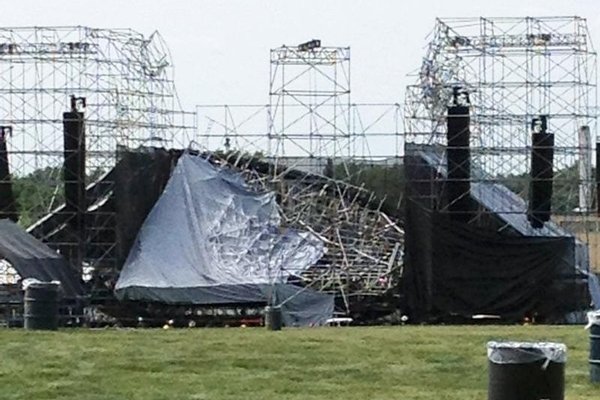Trusses thinner than planned, couldn't handle the load

Domenic Cugliari testified at an inquest into the death of Scott Johnson, a drum technician who was killed when the structure came crashing down just hours before the show was set to start on June 16, 2012.
Cugliari said he visited the site where the stage was being constructed on the two days leading up to the show, but didn't closely examine a critical component of the roof to ensure it matched the plans. He said he looked up at the pickup trusses from the stage floor and believed they were the correct size.
In fact, the four pickup trusses — metal structures bearing the weight of the roof grid — were thinner than what the plans called for, which meant they couldn't handle the load placed on them, he said.
``I couldn't distinguish between the two-inches and the three-inches, so I thought it was the right one,'' he said. ``I relied on the contractor.''
The three-inch pickup trusses could each bear up to roughly 7,700 kilograms, he said. But the two-inch ones that were used could only handle up to about 3,600 kg, he said.
Cugliari told the inquest that his colleague, another engineer, visited the site the day of the show after the contractor expressed concerns that one of the secondary trusses making up the roof grid appeared to be bending slightly once it was loaded with stage equipment.
He said his colleague assessed the bend — called deflection — from the ground and deemed it to be within the acceptable range. But under questioning from the coroner's counsel, Deanna Exner, Cugliari acknowledged it was unlikely that could be determined by the naked eye at such a distance.
Cugliari, contractor Optex Staging and the show's promoter, Live Nation, were charged under provincial health and safety laws in connection with the incident but the case was halted because it took too long to get to trial.
The case was thrown off course when the presiding judge was appointed to a higher court, prompting another judge to declare a mistrial. The court eventually agreed with the defence that the delays had violated the accused's rights to a timely trial.
The inquest, which began Monday, will examine the circumstances around Johnson's death but cannot assign blame. Jurors may make recommendations aimed at preventing such incidents in the future.
Cugliari, who was a certified engineer at the time but has since retired, reviewed and signed off on the plans for the Radiohead stage. The plans were drawn by a designer who worked with him after they received conceptual instructions from Optex more than a week before the show, he said.
In his testimony Friday, Cugliari said the plans contained ``very sloppy'' mistakes.
The plans didn't spell out how to attach beams to the trusses in the roof grid and included ``conceptual drawings'' that should not have been submitted to the contractor, he said. There were also inconsistencies that would likely have been caught if another engineer had reviewed the documents, he said.
Cugliari suggested he may have gotten complacent because he was working with Optex, a client he knew well and trusted.
``It's easy to miss something like this because you know the people putting (the stage) up,'' he said.
Aside from having a second engineer look over any plans, Cugliari said it would also help to have an engineer on site for the entire construction of such stages.
Had that happened, ``we would have seen the critical components before they actually got lifted,'' he said. ``If I had seen (the pickup trusses) at ground level, it would have raised a red flag? this is not the right truss.''
He said there should also be a way for engineers to examine the roof once it is lifted in place, either by building scaffolding stairs into the wings of the structure or by asking those trained to climb the scaffolding to take pictures.
The inquest previously heard from a Ministry of Labour engineer who helped investigate the collapse, who testified the pickup trusses were ``the weakest link'' in the setup. Saeed Khoorsand said the pickup trusses were the first pieces to fail as the roof gave way.





